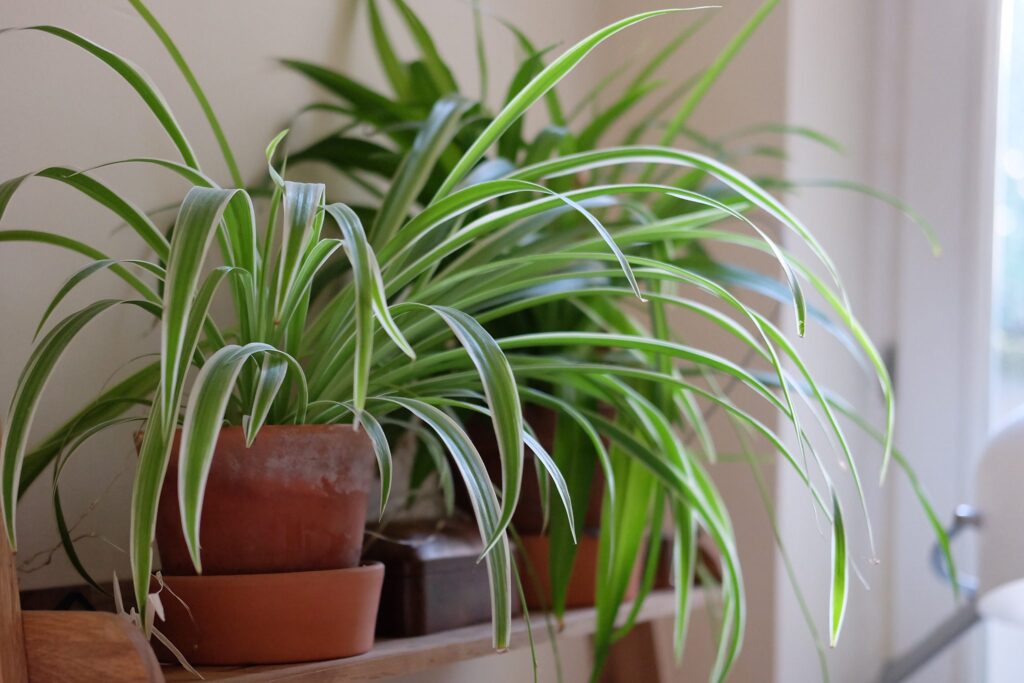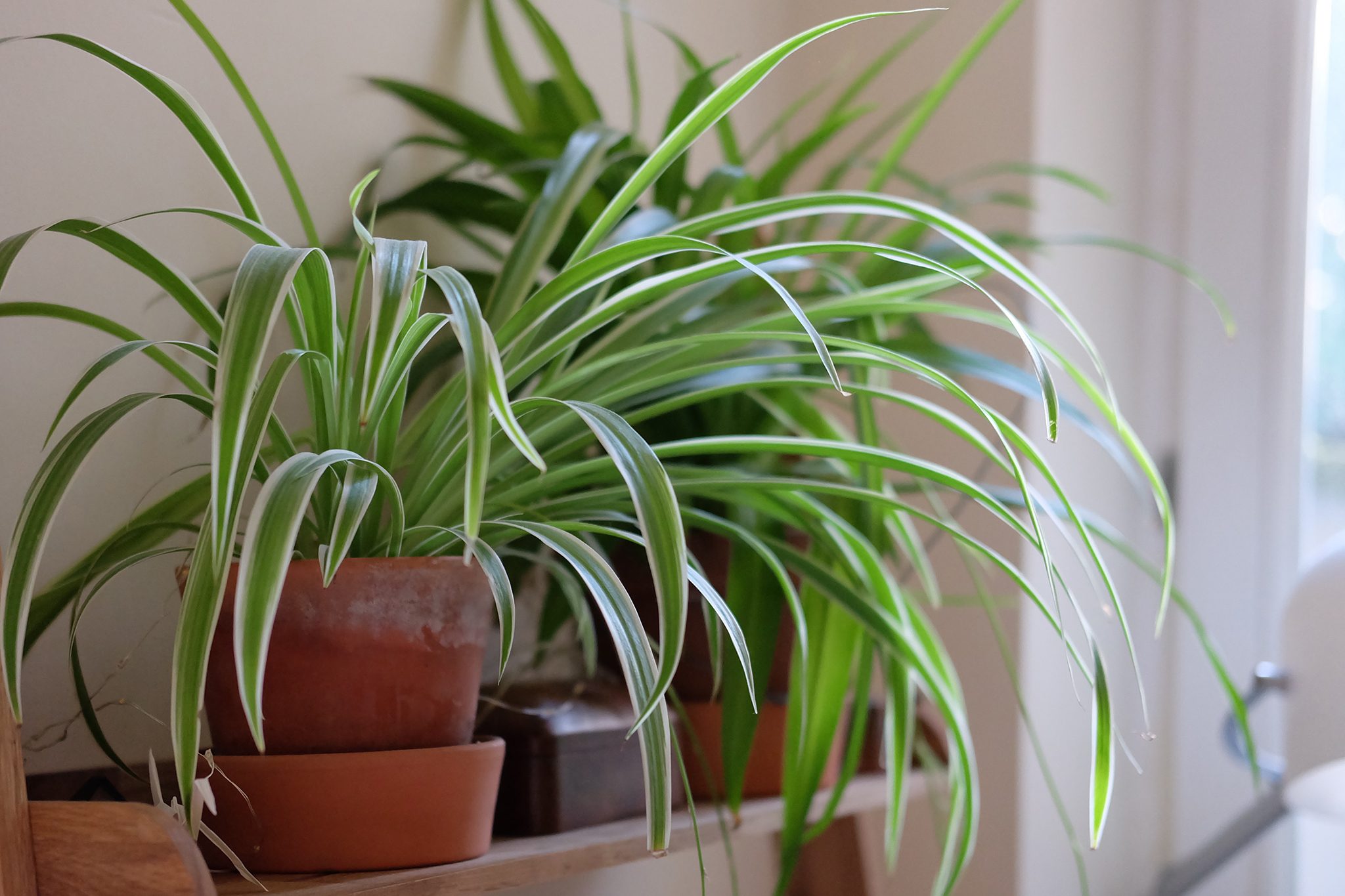Spider plants (Chlorophytum comosum) are a dream for both new and experienced plant lovers. Their unique, cascading leaves, along with their ability to propagate easily, make them one of the most rewarding indoor plants to grow. But while they are low-maintenance, there are some key tips to keep in mind for optimal care. If you’re looking to add an air-purifying, easy-to-care-for houseplant to your collection, the spider plant is perfect.
Why Spider Plants are Perfect for Your Home
First of all, let’s talk about why everyone loves spider plants. Not only are they beautiful, with their long, arching green or striped leaves, but they also help clean your indoor air. Research has shown that spider plants can absorb pollutants like formaldehyde, so having a few around your home doesn’t just add greenery—it helps you breathe easier.
Another major benefit? They’re safe for pets. So, if you have a curious cat or dog, you don’t have to worry about them nibbling on toxic plants. Spider plants are completely non-toxic to pets, making them ideal for homes with furry friends.
How to Care for Your Spider Plant
Here’s what you need to know to keep your spider plant healthy:
- Light: Spider plants prefer bright, indirect light. I usually place mine near a window that gets plenty of sunlight but isn’t directly exposed. Avoid harsh, direct sunlight—it can scorch the leaves.
- Watering: The key with spider plants is to keep the soil lightly moist but not soggy. Overwatering is a common mistake that leads to root rot. And here’s a tip: If you see brown tips on the leaves, your water might be the issue. Spider plants are sensitive to chemicals like fluoride and chlorine in tap water. If possible, use distilled or rainwater for the best results.
- Temperature and Humidity: These plants love warmth, so aim for temperatures between 60-80°F. They can’t handle frost, so make sure to bring them indoors if you’re in a cooler climate. Humidity is also important—spider plants thrive in moderately humid environments, so misting them occasionally will help keep them happy.
- Fertilizer: I feed my spider plants once a month during the growing season (spring and summer). Too much fertilizer can cause the tips of the leaves to brown, so make sure to use a balanced, water-soluble fertilizer and don’t overdo it.
Common Varieties of Spider Plants
There are a few different types of spider plants, and they all have their own special charm:
- C. comosum ‘Variegatum’: This is the most popular variety, with its dark green center and creamy white edges. It’s the one most people think of when they picture a spider plant.
- C. comosum ‘Vittatum’: This one’s the reverse of the ‘Variegatum,’ with white in the center and green on the edges.
- C. comosum ‘Bonnie’: If you’re looking for something a little different, the ‘Bonnie’ has curly, compact leaves and is perfect for smaller spaces.
Propagating Spider Plants: Easy as Can Be
One of the reasons I love spider plants is that they’re so easy to propagate. They naturally produce baby plantlets on long stems, and these can be potted to grow new plants. When the roots of the plantlets are about an inch long, simply snip them from the mother plant and place them in a small pot with well-draining soil. Keep the soil moist, and soon enough, you’ll have a brand-new spider plant!
And if you don’t want to wait for those plantlets, you can always divide a mature plant when repotting it. Gently pull apart the root ball into sections and replant each one in a new pot.
Common Problems and How to Fix Them
While spider plants are pretty resilient, you might run into a few common issues. Here’s how to handle them:
- Browning Leaf Tips: This is probably the most common issue with spider plants, and it’s usually due to chemicals in the water or too much fertilizer. Switching to distilled water and cutting back on fertilizer should solve the problem.
- Sparse Growth: If your plant seems a little leggy, it could be because it’s sending too much energy to its baby plantlets. Try snipping off the plantlets to encourage the main plant to grow fuller.
- Pests: Spider plants can occasionally attract pests like aphids, whiteflies, or spider mites. A simple way to deal with this is to give the plant a good rinse or, in more serious cases, use a natural insecticide like neem oil.
Potting and Repotting Your Spider Plant
Spider plants tend to outgrow their pots every two to three years. You’ll know it’s time to repot when you start to see roots growing out of the drainage holes. Repotting is simple—just choose a pot that’s about a third larger than the current one, and use a well-draining potting mix. Spring is the best time to do this, as it’s when the plant is actively growing.
If you want to keep your spider plant thriving for years to come, repotting every few years is key. And don’t be afraid to prune off any dead or browning leaves—it keeps the plant looking fresh and vibrant.
FAQs About Spider Plants
- Where should I put my spider plant? I like to keep mine in a bright spot with indirect light. They do well on windowsills or in hanging baskets, as long as they’re not exposed to direct sun. Outdoors, they’re great for window boxes or as ground cover in warm climates.
- Do spider plants really clean the air? Yes! Spider plants are known for their ability to remove harmful toxins from indoor air, like formaldehyde. While you’d need a lot of plants to purify an entire house, having a few around will definitely improve the air quality in a room.
- How long do spider plants live? Spider plants are perennials and can live for many years with proper care. I’ve seen some passed down through generations, so if you care for them well, they’ll be with you for a long time.






